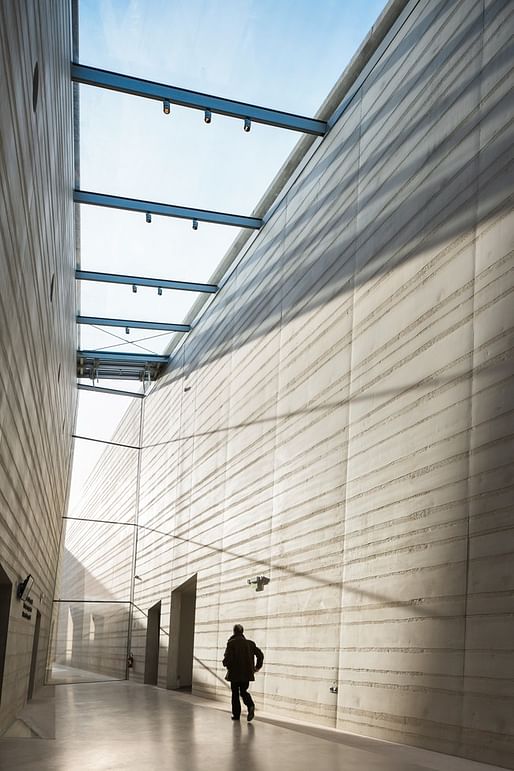
The 20,000-year-old cave paintings of Lascaux are considered among the most important examples of Paleolithic art in the world, and one of the greatest treasures of European patrimony. The Norwegian architecture firm Snøhetta, alongside scenographer Casson Mann, has designed a new museum for the cave in Montignac, France, entitled the The International Centre for Cave Art or Lascaux IV. The museum features “state-of-the-art experiential storytelling technology” as well as a facsimile of the caves, offering “visitors an opportunity to discover the caves in a unique way that reveals a sense of wonder and mystery, as if they, too, were the first group of adventurers to stumble upon the cave paintings,” according to the press release.
The architects describe the museum as a “fine cut in the landscape”—an area sandwiched between a protected, densely-forested hillside and the agricultural Vézère Valley. They argue that the contemporary design of the center avoids falling into the “potential trap of artifice”.




The center is planned as a sequence of experiences. Visitors ascend by an elevator to a belvedere on the roof that provides sweeping views of the adjacent landscape. Then they descend down into the reproduction of the cave, which is damp and dark to recreate the feel of its reference. The replica was constructed with laser scanning and casting technologies, enabling a 1 millimeter tolerance facsimile. After leaving the cave, visitors enter a transition exterior patio before heading into the museum, which hosts a range of exhibitions.
“As a striking, contemporary addition to the landscape of the Vezere Valley, Lascaux IV frames a new experience of some of the finest known examples of prehistoric art, and offers profound new ways of understanding the rich heritage of its site,” write the architects. “The project is forged of a combination of low-tech and high-tech elements, from the meticulously hand-painted replica to virtual-reality exhibitions, engaging its visitors in a contemporary (re)discovery of the art of our ancestors. Weaving together physical and interpretive concepts and spaces, the holistically conceived center unites Paleolithic art with contemporary approaches to spatial and experiential storytelling.”






More images in the gallery.
No Comments
Block this user
Are you sure you want to block this user and hide all related comments throughout the site?
Archinect
This is your first comment on Archinect. Your comment will be visible once approved.